Stunned but delighted is how Dr. Robert McDowell, Director of Wildlife at the University of Connecticut, sounded when I arrived at his office to learn about New England cottontail rabbits.
Finally someone other than himself was interested in these vanishing natives. We pored over skulls and skins and vainly patrolled early successional woods for live specimens. McDowell seethed about the mindset of state fish and game bureaucrats: we can’t waste time on a few native rabbits when we have so many look-a-like non-natives and when license buyers want more pheasants, ducks and deer.
The year was 1983.
The non-natives, called “eastern cottontails,” are a genetic mishmash of species and subspecies plucked from Minnesota, West Virginia, Kansas, Missouri, Texas, Arizona and New Mexico. From the late 1800s to the early 1970s fish and game agencies in the Northeast permitted, encouraged and initiated stocking of these aliens. The result is a tough, adaptable mongrel imbued with hybrid vigor that outcompetes the fragile, specialized native.
In the field even biologists can’t tell an eastern cottontail from a New Englander, but under the skin they’re very different beasts, apparently incapable of hybridization. Easterns can make a living most anywhere, including the young forests on which New England cottontails depend and which, because of fire suppression and beaver-dam control, we’re running out of.
Thanks largely to people like McDowell and Dr. John Litvaitis, a wildlife professor at the University of New Hampshire, there has been a sea change in attitudes. Major funds started pouring in for habitat work when the National Fish and Wildlife Foundation and the Wildlife Management Institute (WMI) got interested in New England cottontails. Now New York and every New England state (save Vermont where the species has been extirpated) is represented on a New England Cottontail Technical Committee. A state, federal and private partnership called the New England Cottontail Initiative is undertaking young-forest restoration rangewide. And rabbits are being raised for release at the Roger Williams Park Zoo in Rhode Island, the Queens Zoo in New York, and Great Bay National Wildlife Refuge in New Hampshire.
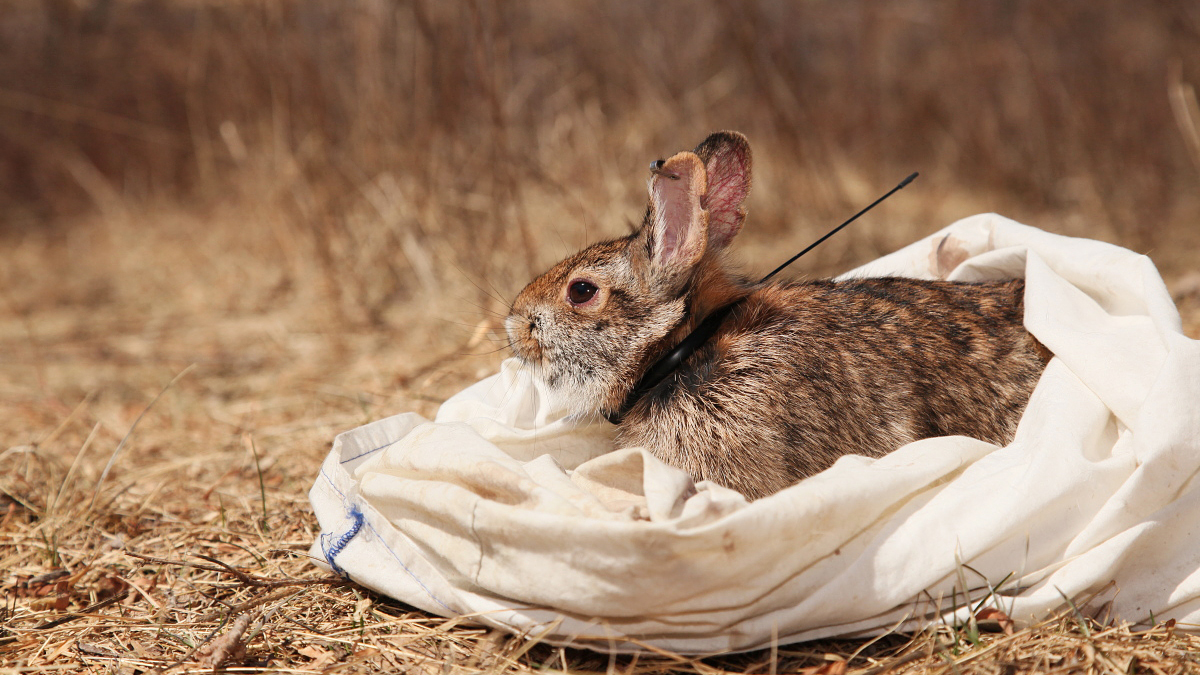
On December 14, 2016 America’s newest national wildlife refuge — the Great Thicket, taking in parts of all six New England cottontail states, was jump-started by a gift from The Nature Conservancy of its 144-acre Nellie Hill Preserve in Dover Plains, New York. In addition to native cottontails the refuge will provide habitat for dozens of other depressed young-forest-dependent species.
The New England cottontail had been a candidate for Endangered Species Act protection, but on September 11, 2015 the U.S. Fish and Wildlife Service determined that listing was not warranted because of all the recovery work.
I wish McDowell could have been with me and my wife Donna on May 17, 2017 when Wayne Woodard, director of The Nature Conservancy’s 1,900-acre Sunny Valley Preserve in Bridgewater, Connecticut, showed us the kind of work the partnership is doing.
Serenaded by bobolinks, yellow warblers, common yellowthroats, American redstarts and red-winged blackbirds, Woodard, Donna and I hiked along meadows managed for grassland birds. In the distance unfurling leaves of mature hardwoods glowed chartreuse in full afternoon sun. Much of this forest, the bane of New England cottontails, is scheduled for clearcutting, but first the understory of invasive barberry needs to be removed. A year earlier a contractor had herbicided a 25-acre plot on the uphill (east) side of a stonewall because barberry seeds mostly by gravity. The contrast with the grossly infested west side was striking. “We had a 95-percent kill rate,” said Woodard. “We’ll go back and treat what’s left, then next winter we’ll do a clearcut.” Barberry on the west side of the stonewall is scheduled for herbiciding, too.
Much of the public reviles herbicides. But Woodard has done extensive outreach, so opposition is less intense here than at other sites. “By July first we’ll have cleared invasives from 70 acres,” he said. “We couldn’t possibly have done that without herbicides. It would have been like putting out a forest fire with a bucket brigade.”
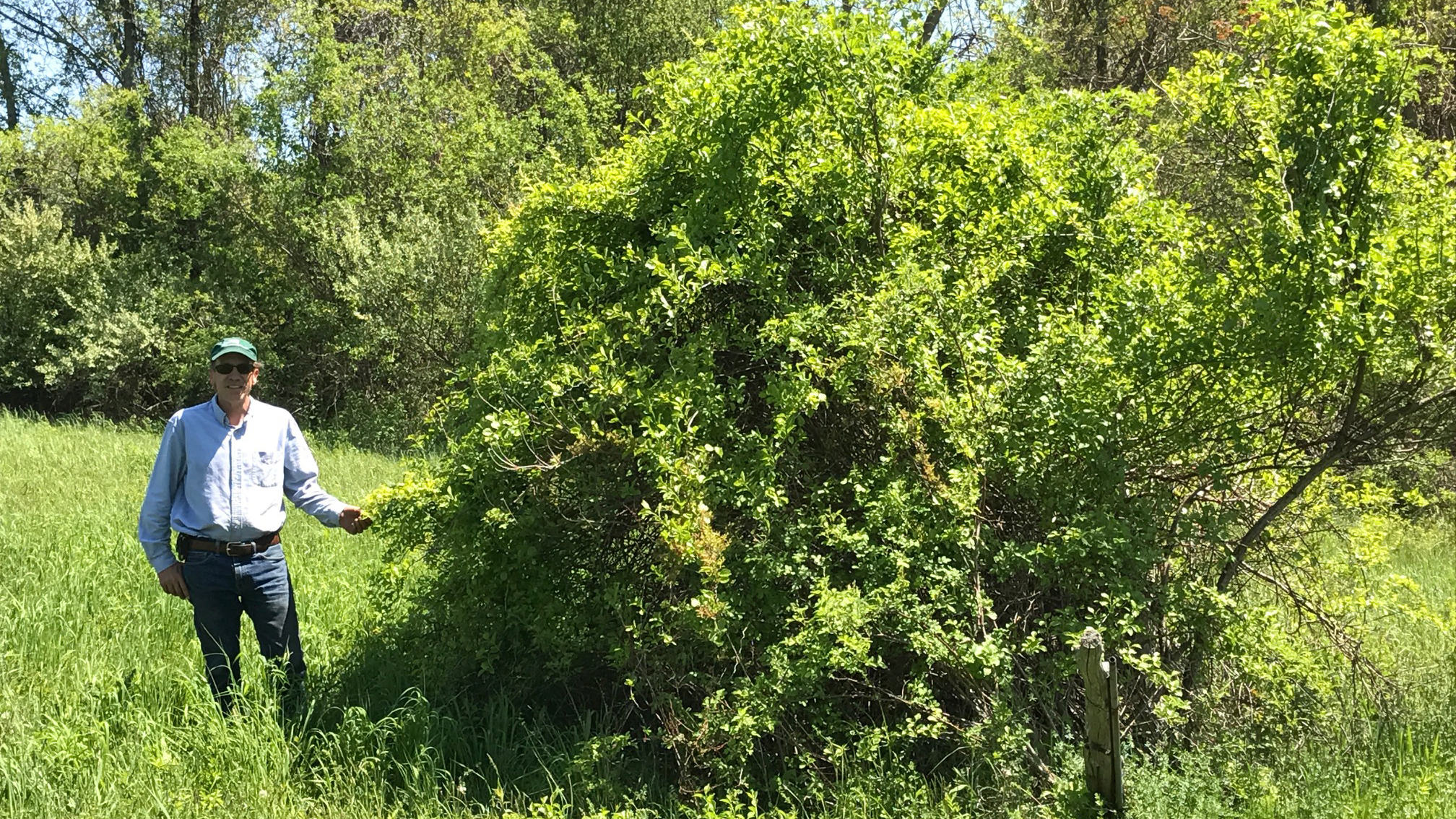
Multiflora rose is one invasive that Woodard has to leave until native shrubs get established. “Rabbits love it,” he said. “That’s what’s kept this abandoned farmland from reverting to forest.”
Deer densities in this part of the East are among the highest in the nation. Deer are spreading invasives, eating natives that provide thicket habitat for New England cottontails and eliminating ground-and shrub-nesting birds. So ten years ago the Conservancy opened the preserve to controlled deer hunting.
“With clearcuts,” explained Woodard, “we’re trying to replicate natural disasters like fires and hurricanes.” In another section of the preserve he showed us a recent clearcut that was strewn with tops and slash to serve as temporary rabbit cover and protection from deer browsing until native vegetation fills in. In nature the word “ugly” has no meaning.
Helping the Conservancy and other partners with habitat work has been Lisa Wahle, a WMI contract biologist working with the Connecticut Department of Energy and Environmental Protection.
“Our biggest issue is people not wanting to cut trees,” she told me. “They’ve heard lots of drum beating about forest fragmentation from clearcuts; but we’re not doing clearcuts like on the West Coast. We started out asking for 25 acres, and quickly backed off that. The minimum patch that NRCS will pay for is six acres. But even six acres is a lot to ask for people who aren’t used to seeing clearcuts. Depending where they’re sited, there may be some initial fragmentation and perhaps cowbirds.”
But these cuts grow back lush and fast, and then they’re just roaring with shrubland species. Interior forest species use them too — it’s where the food is, she continues. “People I’d expect to be more tuned in to the value of occasional patches of young forest are still opposed. In northwest Connecticut there’s even a push for ‘forever wild’ status, which basically puts an easement on your property so you can’t manage it for anything — ever!”
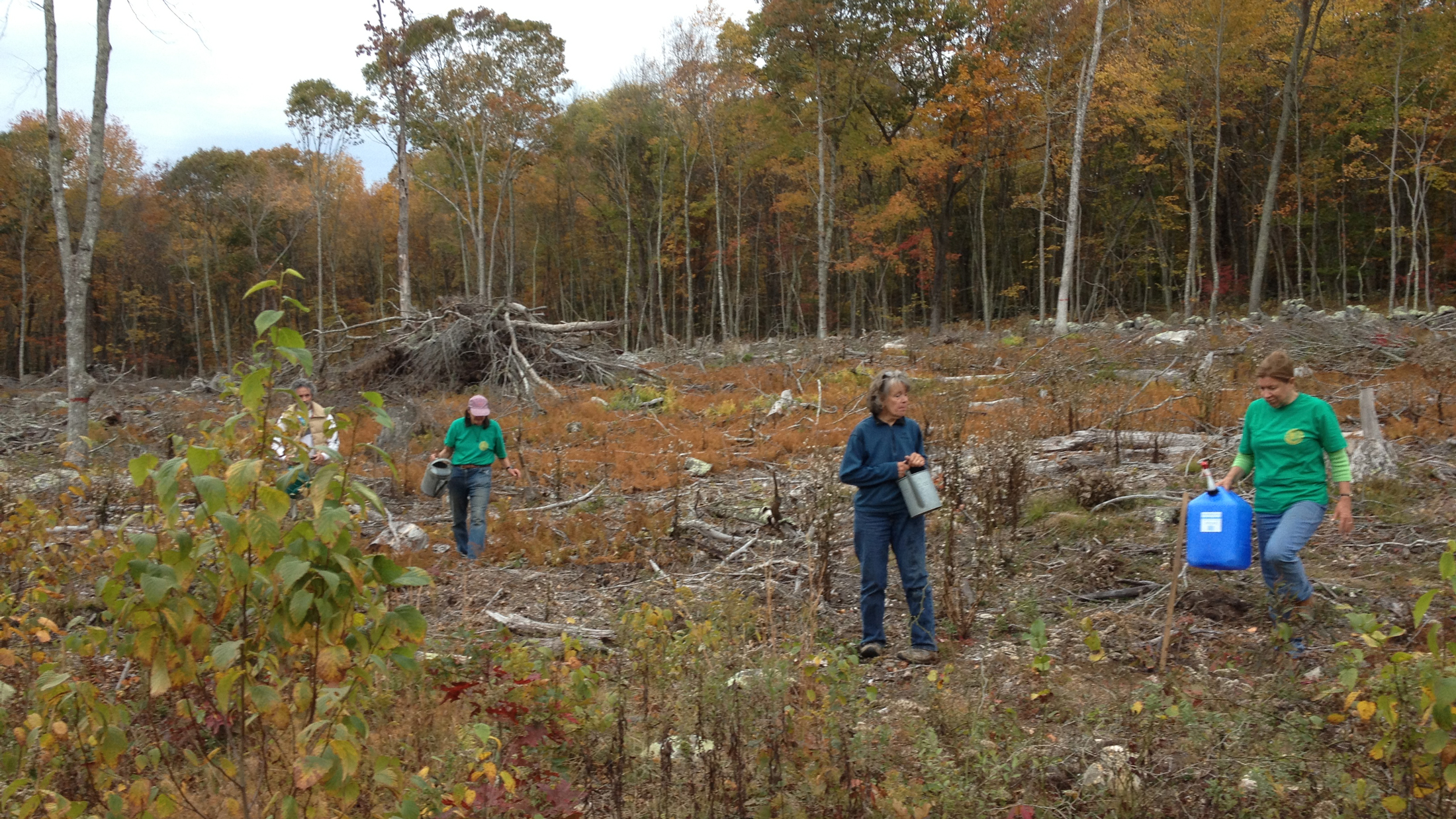
But, like Woodard, Wahle and her colleagues are big on outreach. And, along with frustrations, she cites major successes with land trusts, sportsmen’s clubs and private landowners.
David Gumbart, who directs land management for The Nature Conservancy in Connecticut, reports that New England cottontails have recently been documented on the Conservancy’s Lord Cove Preserve in Lyme. “Wherever we have them we invest in management,” he says.
Captive breeding has progressed to the point that New England cottontails are now being conditioned to the wild before release. When Donna and I inspected the rabbits being raised at the Roger Williams Park Zoo by conservation director Lou Perrotti we began to see a few of the subtle markings that distinguish them from the aliens. They were a bit darker and smaller. Ears were trimmed with fine, black fur and they lacked the white forehead spots common on easterns.

These and other of the zoo’s rabbits have been released on Patience Island in Narragansett Bay. So robust is the population there that animals are being live trapped and sent to the new outdoor breeding facility at Great Bay National Wildlife Refuge in New Hampshire and released in Rhode Island’s Great Swamp Wildlife Management Area.
Rabbits bred at the zoo have also been released at the Bellamy River Wildlife Management Area, biggest habitat restoration site in New Hampshire. When I caught up with manager Jim Oehler he and 87 volunteers had just planted 10,500 native shrubs. And he’s been clearcutting. Eventually 200 acres, nearly half the property, will be converted to young forest.
One thing New England cottontails have going for them is that the public considers them “cute,” an advantage many vanishing species — timber rattlesnakes, for example — lack. In addition to New England cottontails Lou Perrotti has been raising timber rattlers, more endangered in New England than any other species. This was part of a project by the Massachusetts Division of Fisheries and Wildlife to prevent extirpation by establishing a colony on an uninhabited island in the middle of the state’s sprawling Quabbin Reservoir. No one gets bitten by these shy, reclusive snakes; they’re no more dangerous to humans than rabbits, and the island is off limits to the public. But last April, after years of patient education by the Division, snake haters shouted down the project.
For the most part, the American public has yet to grasp what McDowell and Litvaitis understood from the start and what fish and game bureaucrats have learned since 1983 — that imperiled species need to be saved not because they are “cute,” not because they are “beautiful,” not because they are useful, not because they are anything. Only because they are.
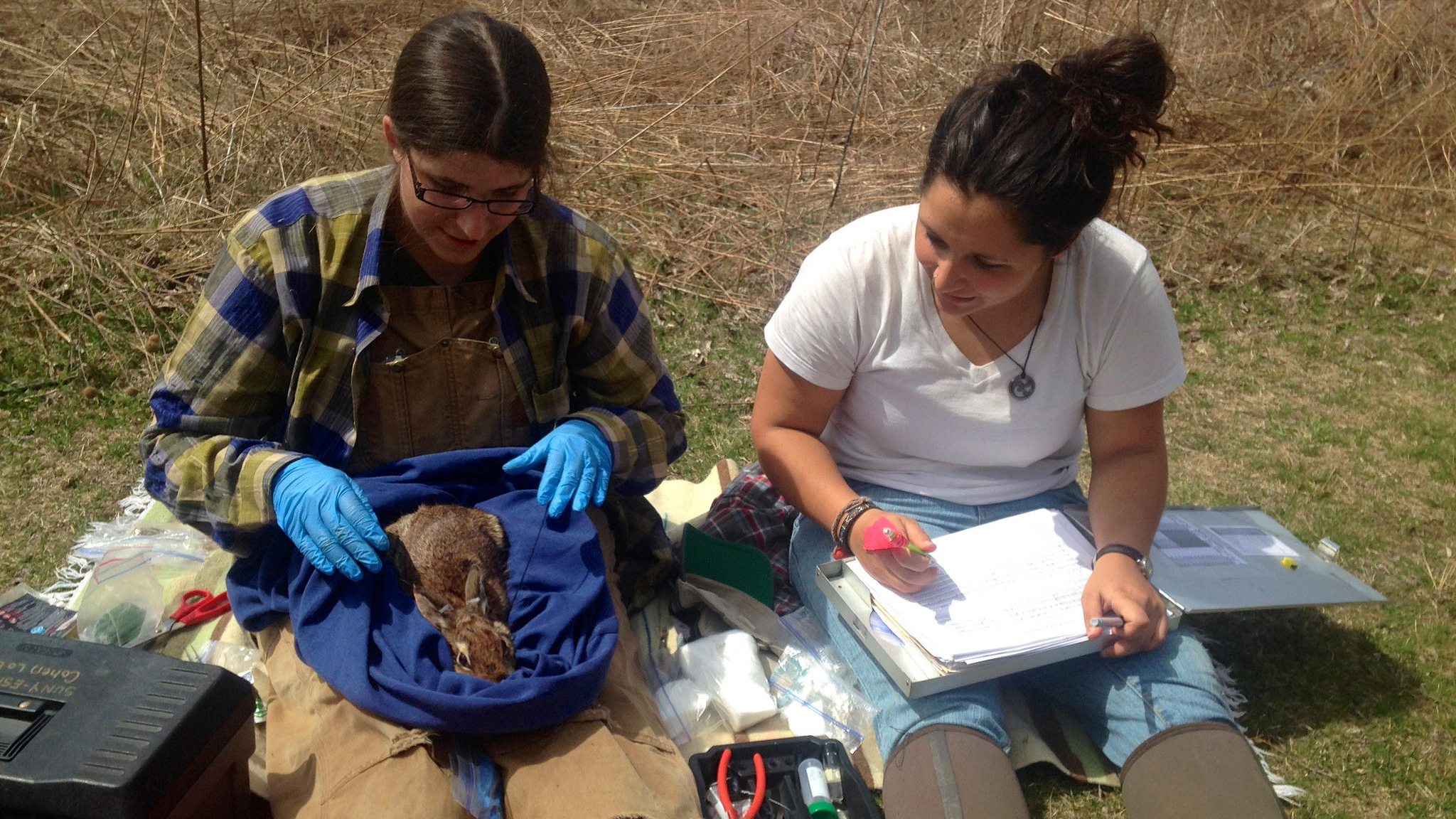
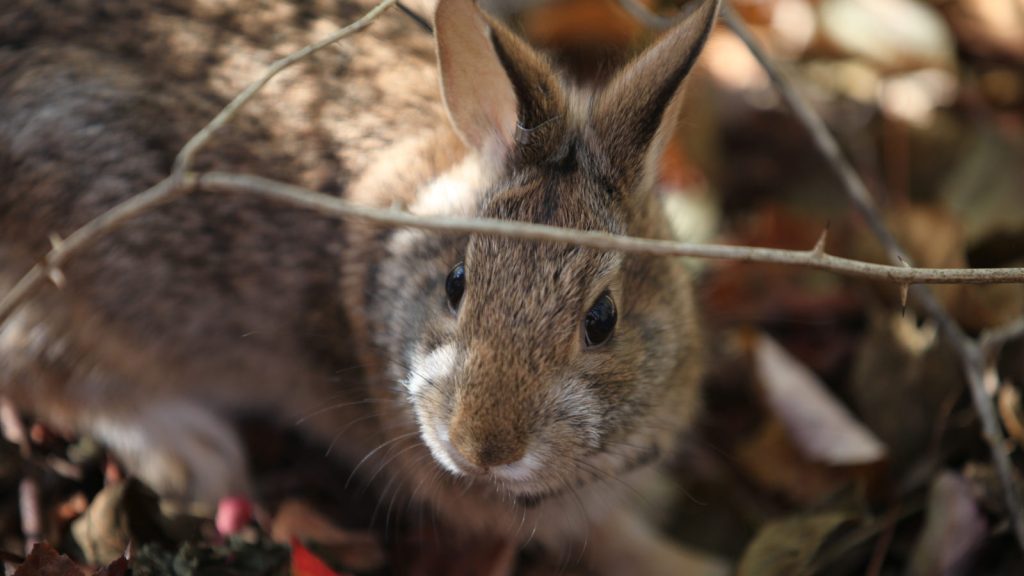



Thank you for the education. I had never heard of the New England cottontail until now. I appreciate your efforts to spread the word that open areas in the forest are more important for many species than deep woods. Most laymen do not understand that. I saw that also in Southern pine forests where the clear cut s provided grasses, berries and other plants that animals could eat. Few animals eat full grown trees!
Robert James: I agree that there is never an excuse to “use poison which contaminates soil, water sources, groundwater and endangers humans and wildlife.” The point you are missing is that the herbicides TNC and other top wildlife restorers use to save species like the New England cottontail do none of these things. In the recovery of imperiled species there are always tradeoffs. I wish we didn’t ever have to use herbicides. But without them the battle to save native ecosystems is lost. The environmental damage herbicides do in native wildlife restoration is negligible. Frequently the choice is herbicide use or wildlife loss. I vote for the former.
A lifelong resident of upstate New York, and outdoorsman in the Adirondacks, I never knew “we” had a native rabbit species. This article was enlightening because of that, and also the information about how hybridized cottontails gained strong footholds in our area, the description of “fighting conservationists to achieve conservation”, regarding the public’s opposition to all sorts of green science plans and projects.
It was a shock to hear the timber rattlesnake is so threatened.
On the extinction of species, I hold a more cosmic view. I realize that on the surface there is a correlation between humankind’s activities and all the species they affect, on a grand scale bolstered by these giant accursed brains, opposable thumbs, and the ability to manipulate everything but gravity. Still, keystone species such as beavers also bring “destruction” to an ecosystem, though on scale it’s more easily absorbed by the planet.
The number of species that have lived and gone extinct on this planet exceeds by a huge factor the number of species that currently live on our globe. That’s mind-numbing.
Extinction of species is a natural part of the whole order of the cosmos. Like clear-cutting and raising rattlesnakes, this is never likely to be understood by most, nor embraced. Sometimes I wonder if we are doing the right thing after all. I love and respect all forms of life, and their natural order. I wonder if our continued manipulation of such things will ultimately bring good, or future problems we are unable to anticipate or understand.
Still, human nature calls us to take care of the things we have before us.
And we have a tremendous amount of making up to do, to overcome the mistakes and damage of unenlightened generations before and current.
We must be the voice for those that cannot speak for themselves.
Sincerely,
Scott R. O’Connor
Sharon Springs, NY
last week, 6/20/17, i saw a wild rabbit for the first time in 7 years. when we first moved to this rural area we’d see them often. also 10 to 7 years back we’d see pheasant, owls, bats, snakes, raccoons, skunks, red fox, coyotes, river otter, monarchs all of which have disappeared. the corporate media really isn’t doing it’s job pointing out that conservative policies are killing america! bee have been a sharp decline too. a swarm used to land in our yard to rest almost every spring as they looked for a location to set up a new colony. what we do have now in billions it seems is doves. what the heck are doves doing in the middle of wilderness? i don’t like them, the way they look and sound. i could listen to any other wild bird chip all day and night but doves seem like they don’t belong in the wilderness! seems like nature is out of balance!
The use of herbicides is a travesty to the earths ecosystems. There is never an excuse to use that poison which contaminates soil, water sources, groundwater and endangers humans and wildlife. Those that use herbicides are putting themselves at risk for cancer, liver damage, Parkinson’s disease etc.
If one cannot control so called invasive plants with manual removal then forget it.
One is a complete fool to use herbicides and in doing so supports the toxic chemical industries
that make these products.
I have been a member of the nature conservancy for over 40 years and may now quit knowing that the conservancy condones the practice of herbicide use on their (our) properties.
Sincerely
Robert L James
We are losing everything beautiful and sacred to this planet. It’s all become about the dollar. Donation are great but no one can afford them either with the government taking all that too.
I have a mother and baby rabbit in my back yard now. I live in Shelton, CT. I believe my neighbor across the road has a few of them too. I’m hoping they stay and continue to live in the woods here. There’s lots of woods and as a matter of fact, I just had some trees taken down in the woods…glad to hear that that action will help these little animals survive and hopefully thrive. Thanks for your work.
Please save these sweet little animals.
I live in VT and I want to know what I may do to help? I have had rabbit nests in my backyard, and I just love them.
SIGNED, SHARED AND SUPPORT FOR PROTECTION OF OURS ANIMALS ALL THE GOBERMENT, REPRESENTATIVES OF THE LAWS OF NATURE OF THE NATION’S.